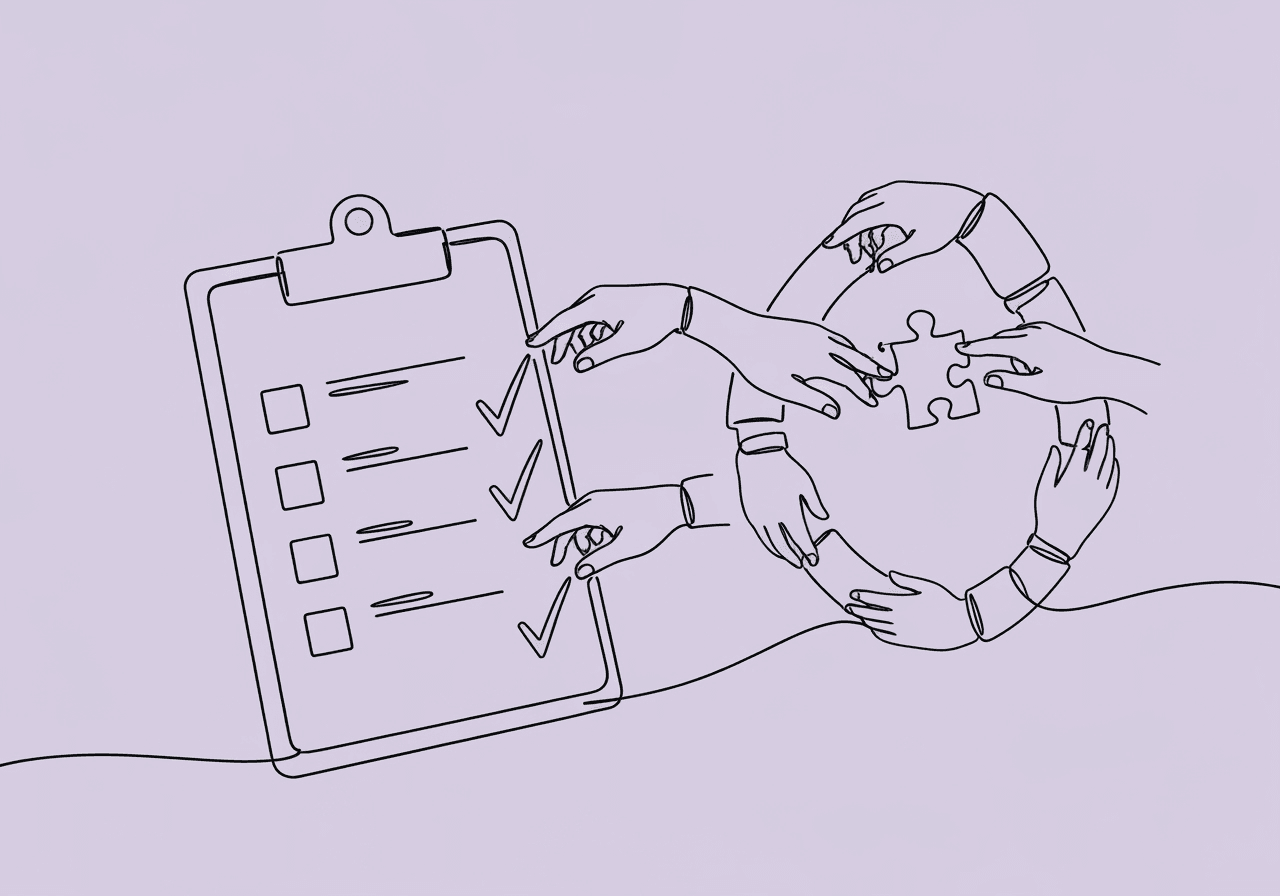Essential ABA Emergency Protocol Documentation for BCBAs

ABA therapy moves quickly, and emergencies can strike without warning. Whether it's a medical issue, natural disaster, or behavioral crisis, these events can disrupt services and risk client safety. As a BCBA, you are a guardian of ethical practice. The BACB Ethics Code highlights the need for robust ABA emergency protocol documentation for BCBAs. This documentation is a cornerstone of compliance, protecting vulnerable individuals with autism and other developmental needs.
Here are the key takeaways from this guide:
- BCBAs have an ethical duty under BACB codes 2.09 and 2.15 to plan for emergencies to ensure service continuity and minimize risk.
- Emergency protocols must be tailored to different crisis types: medical, natural disaster, and clinical.
- Documentation must include client-specific safety plans, service continuation strategies like telehealth, and proof of staff training.
- Regularly reviewing, updating, and simulating emergency plans is essential for staying audit-ready and compliant.
This guide explores your ethical obligations, defines key emergency types, and provides actionable steps for documentation in client safety, service continuation, and staff training. You'll also find a practical checklist to maintain compliance, drawing from BACB guidelines and industry best practices.
Understanding the Ethical Obligation: BACB Code and Emergency Preparedness
The Ethics Code for Behavior Analysts outlines responsibilities that directly inform emergency preparedness. While standard 2.15 focuses on minimizing risks from interventions, broader sections like 2.09 (Interrupting or Discontinuing Services) require BCBAs to document efforts to prevent service disruptions during emergencies. The BACB states that behavior analysts must implement contingency plans, such as temporary supervision or telehealth, to maintain client progress and avoid harm.
This ethical framework extends to having a disaster preparedness plan ABA providers can rely on, ensuring interventions remain effective amid crises. For instance, the BACB's Continuity of Services Toolkit recommends documenting backup staff availability and communication protocols. Failure to prepare can lead to ethical violations and compliance investigations.
By prioritizing these standards, BCBAs demonstrate competence and client-centered care. Integrating BACB ethical standard 2.15 principles means proactively addressing risks, such as behavioral escalations, through evidence-based planning.
Defining Types of Emergencies in ABA Settings
Emergencies in ABA therapy fall into three main categories: medical, natural disasters, and clinical crises. Each demands tailored protocols to safeguard clients, who often have heightened sensitivities to change.
Medical emergencies include seizures, allergic reactions, or injuries. Natural disasters, like hurricanes or earthquakes, can halt in-person services. This disruption can be significant, as research shows up to 75.5% of individuals with autism experience multiple emergency department visits due to challenging behaviors when routines are disrupted. Clinical emergencies involve behavioral crises, such as aggression or elopement, requiring immediate de-escalation.
According to Autism Speaks, these events can disproportionately impact autistic individuals due to sensory overload or communication barriers. Therefore, BCBAs must document protocols for each type to align with ethical standards. This preparation not only complies with BACB guidelines but also builds resilience.
ABA Emergency Protocol Documentation for Client Safety
Effective ABA emergency protocol documentation BCBA starts with client-specific safety measures. Begin by developing individualized emergency procedures based on each client's functional assessment, outlining triggers, warning signs, and response steps.
Key elements include:
- Emergency contact cascades: List primary contacts (e.g., guardians, physicians) with phone numbers and escalation paths. Document consent for sharing health information during crises, as required by HIPAA and BACB ethics.
- Safety protocols: Detail de-escalation techniques, like environmental modifications or sensory supports, and when to involve emergency services. For medical issues, include allergy alerts and first-aid steps.
- Consent forms: Obtain written parental consent for emergency interventions, such as protective holds, ensuring they meet least-restrictive criteria under standard 2.15.
The RBT® Task List (2nd ed.) requires that staff implement these safety procedures as specified in the protocol. For deeper insights on ethical documentation, see our guide on BCBA Ethical Documentation Best Practices.
Service Continuation Documentation: Telehealth and Interruption Plans
When emergencies strike, maintaining service delivery is crucial to avoid regression. Your disaster preparedness plan ABA documentation should outline contingencies like telehealth transitions or temporary service adjustments.
Essential components:
- Telehealth contingency plans: Specify platform requirements, data security measures, and session adaptations for remote delivery. Document parental training on virtual tools to ensure participation.
- Interruption logs: Record reasons for disruptions (e.g., power outages), duration, and compensatory strategies, such as makeup sessions.
- Relief documentation: For prolonged disasters, detail funding applications or collaborations with community resources, aligning with the BACB's emphasis on minimizing harm.
The BACB Continuity of Services Toolkit highlights that undocumented interruptions can violate ethics code 2.09. In practice, providers who documented telehealth switches during disasters sustained high levels of therapy hours. This forward-thinking approach keeps clients on track while demonstrating compliance.
Staff Competency in ABA Emergency Protocols
RBTs and support staff are often first responders in crises, so thorough training documentation is non-negotiable. BCBAs must verify competencies through hands-on assessments, as per the BACB.
Core documentation practices:
- Training sign-offs: Use checklists for crisis simulations, covering de-escalation, CPR, and protocol execution. Renew annually or after incidents.
- Procedure posting: Ensure emergency guides are accessible in session areas, with digital backups for remote access.
- Post-emergency session notes: Require objective details on incidents, interventions, and outcomes within 24 hours, including client response and follow-up plans.
The BACB requires RBTs to implement crisis procedures per protocol, with full disclosure to supervisors. For a practical tool, our RBT Crisis Management Checklist Guide outlines de-escalation steps. Post-incident reviews, documented in team meetings, improve future responses and support ethical reflection under code 2.15.
Compliance and Maintenance Checklist: Staying Audit-Ready
To operationalize your ABA emergency protocol documentation BCBA, use this checklist grounded in BACB standards. Review it biannually to ensure ongoing compliance.
- Assess and update protocols: Conduct risk audits for all clients; revise based on recent incidents or environmental changes.
- Train and certify staff: Verify 100% completion of emergency training; document with dates, signatures, and competency tests.
- Test and simulate: Run quarterly drills for medical, disaster, and clinical scenarios; log participation and debrief findings.
- Audit documentation: Review a sample of session notes and consent forms monthly for completeness and ethical alignment.
- Collaborate externally: Partner with local emergency services; document agreements and share client needs (with consent).
- Measure effectiveness: Track metrics like response times or service continuity rates; adjust plans per data.
The BACB Ethics Code stresses continuous evaluation to minimize risks. Tools like our ABA Incident Reporting FAQ can streamline this process. Regular maintenance not only meets BACB ethical standard 2.15 but also fosters a safer practice.
Frequently Asked Questions
What are the key components of an effective emergency protocol in ABA?
An effective protocol includes risk identification from functional assessments, step-by-step response procedures, clear safety measures, and post-incident review processes. It should be tailored to client needs and staff must be trained on all elements for compliance.
How can BCBAs ensure staff are properly trained in emergency procedures?
BCBAs should use hands-on training, including role-plays and competency assessments, with sign-offs for completion. The RBT Task List mandates this to ensure protocols are implemented safely, reducing risks under ethics code 2.15.
What should be included in post-emergency session notes for ABA?
Post-emergency notes must objectively detail the incident, interventions applied, outcomes, and follow-up actions. Include staff involved and client notifications. BACB standards require timely, accurate reporting to supervisors.
How do natural disasters impact ABA services, and what documentation helps?
Natural disasters disrupt routines, which can increase behavioral crises. For example, research shows 75.5% of autistic individuals may face multiple ED visits from such escalations. Documenting telehealth shifts and recovery plans in your disaster preparedness plan ABA helps minimize harm.
What are the consequences of not having an emergency preparedness plan in ABA?
Without a plan, BCBAs risk ethical violations, service denials, or client harm, potentially leading to BACB investigations. Undocumented interruptions breach code 2.09. Proactive planning ensures continuity and compliance.
How often should emergency protocols be reviewed and updated in ABA practices?
Protocols should be reviewed quarterly or after any incident, with annual full audits. BACB guidelines emphasize ongoing evaluation to align with client needs and minimize intervention risks under standard 2.15.
Wrapping up, robust ABA emergency protocol documentation BCBA is an ethical imperative that safeguards clients. By aligning with BACB standards like 2.15 for risk minimization and 2.09 for continuity, you uphold professional integrity. Evidence shows that prepared practices sustain therapy goals, even in chaos.
To implement this, start by auditing your current protocols against the checklist above. Schedule staff training sessions and integrate telehealth contingencies. With these steps, you'll build a resilient practice that prioritizes safety and compliance.
Popular in Compliance & HIPAA
- 1
ABA Documentation Checklist: RBT Compliance Guide 2025
9179 min read - 2
BCBA Procedural Fidelity Checklist: Essential H-6 Guide
9126 min read - 3
RBT Renewal Competency Documentation Guide for BCBAs
7366 min read - 4
BCBA Ethical Documentation Best Practices
4826 min read - 5
RBT Supervision Log Audit Checklist for BCBAs
4456 min read
Popular in Compliance & HIPAA
- 1
ABA Documentation Checklist: RBT Compliance Guide 2025
9179 min read - 2
BCBA Procedural Fidelity Checklist: Essential H-6 Guide
9126 min read - 3
RBT Renewal Competency Documentation Guide for BCBAs
7366 min read - 4
BCBA Ethical Documentation Best Practices
4826 min read - 5
RBT Supervision Log Audit Checklist for BCBAs
4456 min read
Related Resources
Explore more helpful content on similar topics

ABA Incident Report Documentation: FAQ Guide
Master ABA incident report documentation in this essential FAQ guide. Learn RBT critical incident checklists, BCBA reporting requirements, and how to write objective incident notes for ethical, accurate records. Ensure compliance today!

Mandated Reporting Documentation in ABA: 7 Steps
Master mandated reporting documentation in ABA with our 7-step guide. From objective observations to HIPAA-compliant follow-up, ensure ethical compliance, protect clients, and safeguard as a BCBA or RBT. Learn now!

BCBA Treatment Integrity Documentation: 5 Key Steps
Discover 5 key steps for effective BCBA treatment integrity documentation. Learn to create procedural fidelity checklists, measure RBT fidelity, and build audit-proof logs for ABA compliance success.